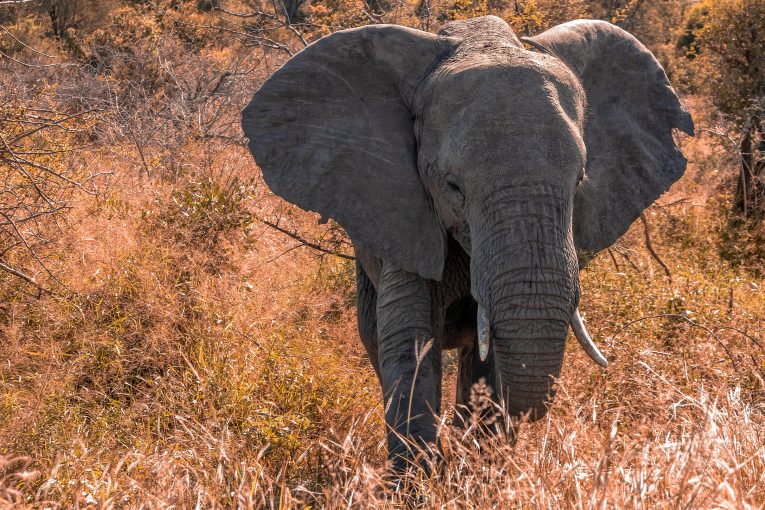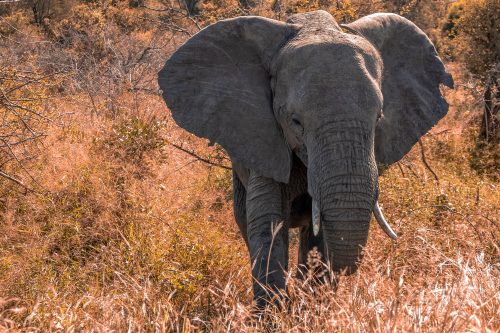

By Kayla Ngai
Should we care about ivory trafficking? Ivory is by no means an everyday substance. According to the Smithsonian, “its cultural uses make ivory highly prized. In Africa, it has been a status symbol for millennia because it comes from elephants— a highly respected animal, and because it is fairly easy to carve into works of art.” About 20,000 elephants are killed each year for their tusks. Because elephants are so highly respected and because of their role in maintaining a rich biodiversity in the forest and savanna ecosystems, it is unjustified to steal the tusks from these creatures to harvest their ivory.
On Feb. 14, the Nature Human Behavior journal posted findings that linked the DNA of African elephants to an international crime ring— one that harvests ivory from Africa and has been operating for decades. The research was led by Samuel K. Wasser, a biology professor at the University of Washington, who aims to “use the best possible science to help direct wildlife conservation and management policies around the world.” According to CNN, “researchers used genetic testing on ivory shipments seized by law enforcement.” They tested for forest elephant, Loxodonta cyclotis, DNA which represents only 6% of the remaining African elephant population, as well as for savannah elephants, Loxodonta africana, testing over 4,000 tusks from 49 different seizures.
The researchers found genetic connections in the elephants that were poached, which helped “reveal…the poaching and shipping practices and interconnectedness of the traffickers.” The study built upon Wasser’s previous work, along with his colleagues from 2018, which showed that the “tusks from the same elephant were often separated and smuggled in different shipments.” It linked the port cities in Kenya, Uganda, and Toga to their underground ivory trafficking markets.
With the newly discovered information, the scientists also realized that there is “a small group of smuggling networks that are the most likely ones responsible for large ivory shipments.” Due to the chain of smaller rings spread throughout Africa, they were able to move larger amounts of ivory on container ships easily. The study revealed that the networks had been transitioning from different ports, moving frequently to remain harder to catch.
New evidence could be brought in to strengthen cases for those who had already been arrested for their involvement in the rings. It would make sure that the poachers and traffickers are held accountable for their actions. This is important because it would send a message that researchers and communities are actively reinforcing the government’s ivory laws which would, in turn, spread more awareness on the illegal practices and work towards cracking down on criminal activity.
Through the familial connections between the elephants, researchers were able to discover the large range of the crime rings. The networks in Kenya, Uganda, and Toga “are involved with many more seizures and more connected to each other than previously discovered.” It was a difficult process matching tusks of the same elephant, but using DNA from the tusks to identify families that created a direct link to the trafficking networks gives us plenty of hope!
The overall goal of these studies was to crack down on the ivory trafficking problem with the main aspiration being “provide a framework to combine evidence from multiple investigations, strengthen prosecutions and support indictment and prosecution of transnational ivory traffickers for the totality of their crimes.” The researchers wanted to discourage more poachers from participating in the ivory trade, along with putting pressure on the currently operating crime rings.
It’s amazing how we can utilize science and technology to help break down the illegal ivory networks operating in Africa. Despite the fact that this study is heading in a good direction, however, there should still be more pressure placed on different governments globally to ensure the protection of African elephants and work on dismantling these crime syndicates. African elephants are now an endangered species, and yet this conflict is not discussed as widely as it should be.
Although some countries have put bans on ivory to deter trafficking (like the United States which instituted a commercial ivory ban in 2016) Wasser stated that it is not enough and does not provide a substantial impact, which I agree with. Due to the networks operating illegally, bans don’t accomplish much.
If, however, there was more of a global outrage with people fighting against illegal ivory networks and acknowledging their harms, ivory sales may decrease at a quicker rate. Furthermore, I believe that people should refrain from purchasing ivory to create lesser demand for it and eradicate the power that the networks have over communities. With illegal trafficking that leads to the death of many elephants, there is no simple solution to the problem. However, by spreading awareness, there may be more successful progress made towards saving elephants and their tusks.






Sounds to me like elephants are not “highly respected”.
Or at least, not the part that isn’t made of ivory.
Using the definition provided in this article, cows, chickens and pigs are “highly respected” in this country – the entire animal.
Even the hide, in the case of cows (and other animals).
I read about this as child and it sickened me. And 50 years later (yeah, half a century) we still have poaching rings. I am generally not supportive of the death penalty, but elephant poachers should be shot on site and their carcasses left to rot in the African sun. What kind of sick F could kill an elephant? I’d say more, but why bother?
I’d even go for them being ‘shot on sight’… location doesn’t matter…